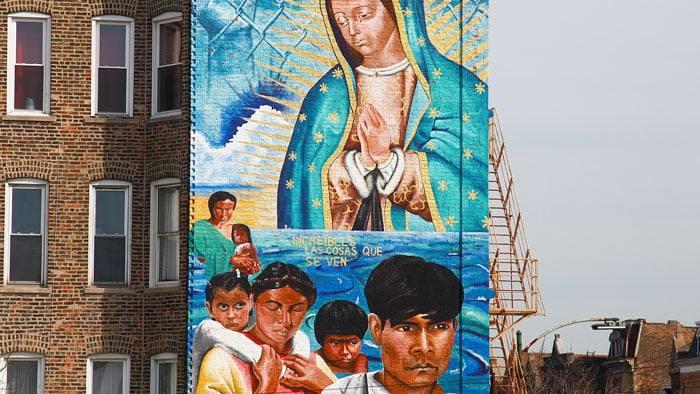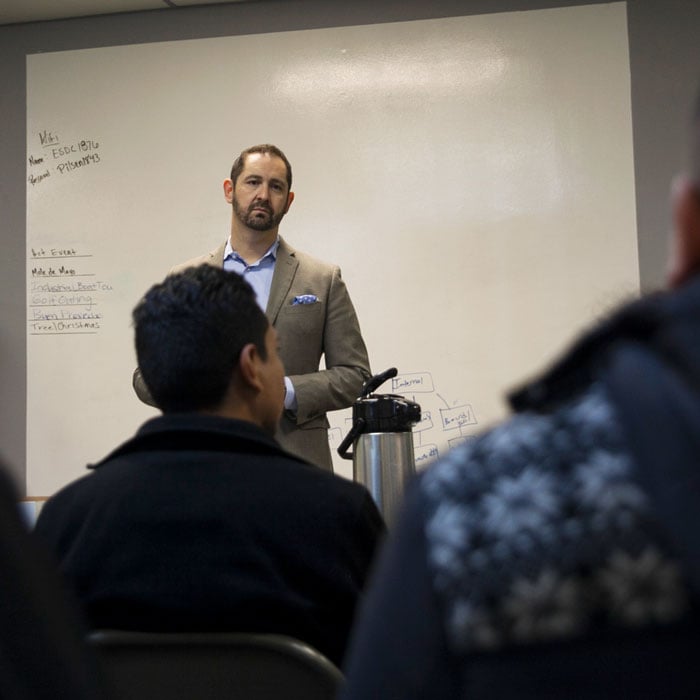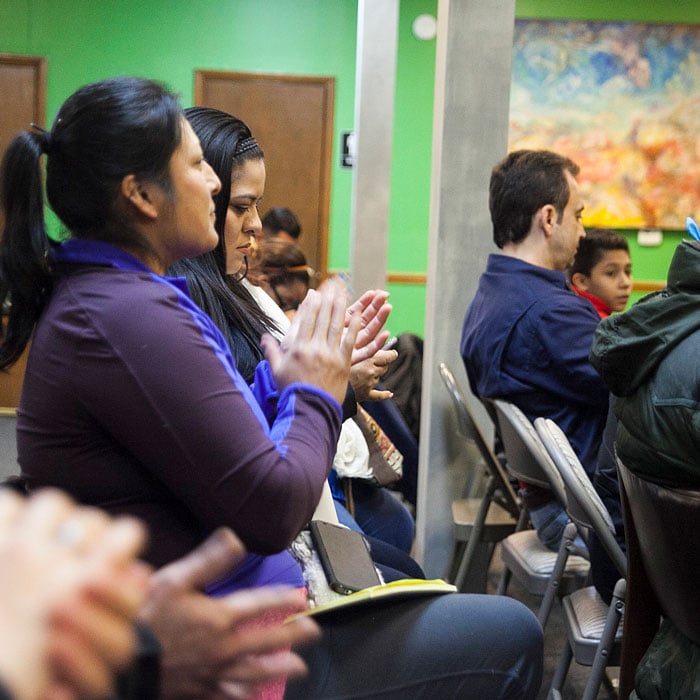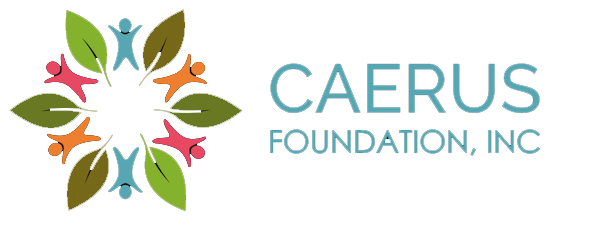Immigration | My Neighborhood: Pilsen
Immigration

A panel of Increíbles Las Cosas Que Se Ven, a mural by Mark Zimmerman depicting the Virgin watching over families crossing a river and a man behind a fence. Photo by Kaitlynn Scannell
Pilsen has been a “port of entry” for more than 150 years.
The Czech, Polish, German, and other immigrants constructed its earliest buildings for density, wanting not only to be close to jobs in local factories but also to live in close proximity to their fellow countrymen so that they could continue to speak their native tongues, retain their cultural identity and practices, and ease their assimilation.
Over the years, the design has attracted several waves of arriving immigrants. It has also proved quite conducive to canvassing homes, attending meetings and political organizing.
Since Pilsen became a predominantly Mexican community in the 1970s, the immigrant rights movement there has expanded its network and amassed more political power with each passing decade.
It all began informally. In the early ’70s, networks of church congregants and activists, many of them immigrants themselves, coordinated shelter for arriving immigrants in spare rooms and livable basements. They collected old coats for people unprepared for Chicago winters and maintained lists of possible social service agencies that could help new arrivals, many of them undocumented.
By 1976, they had secured the full support of their church leadership, and all Pilsen churches signed onto a statement declaring themselves sanctuaries from the U.S. Immigration and Naturalization Service.
In the ’80s, several organizations formalized structures to help people secure legal status. Today, the Frida Kahlo Community Organization, Instituto del Progreso Latino, and The Resurrection Project (TRP) all connect immigrants with free or discounted legal services and offer citizenship counseling and classes. Those and many other organizations, including Pilsen Neighbors Community Council, also organize politically for immigration reform and immigrant rights.
In 2003, The Resurrection Project was at the forefront of the successful statewide campaign for in-state tuition for undocumented students. It and other Pilsen-based organizations also lobbied for years to create an avenue for temporary protection from deportation for millions of undocumented people brought to the U.S. as minors, which effectively became law through an executive order signed by then-President Barack Obama in 2014.
They’ve done all of this, in part, by strengthening the Latino voting bloc. In 2016, community organizers such as Anel Sacedo from Get Out The Vote, fanned out throughout Pilsen and other predominantly Latino neighborhoods, registering new voters and urging residents and citizens to vote – not just for themselves, but for their community.
In the wake of the 2016 election, many Pilsen organizations have doubled down.
Local churches have coordinated an emergency response network and compiled lists of parishioners ready to temporarily care for the children of anyone who is deported and has no other plan in place.
Organizations such as the Eighteenth Street Development Corporation (ESDC) are educating undocumented business owners, parents, and homeowners on how to protect their assets in the event that their lives are unexpectedly interrupted.


Attorney Salvador Cicero takes questions and concerns at a workshop at ESDC. Participants clap after the ESDC presentation for undocumented business owners, parents, and homeowners. Photo by Kaitlynn Scannell
And last year, shortly after the November election, as fears of an imminent nationwide crackdown on undocumented immigrants spread, the Chicago mayor called upon Pilsen activists to help steer that a citywide immigration task force. TRP is now the lead agency of that effort, which is training immigrants to educate undocumented people about their rights and connecting them with legal services to fight any potential deportation orders.
Isaura Salinas is a case manager at Project VIDA and attended one of those recent Know Your Rights workshops.
“I want to help create hope, for my family and for my community,” she told WTTW.
Salinas was born in Pilsen, and says her father was a longtime activist. She wants to continue the family tradition by helping empower her clients and her community.
“I want my kids to see what Pilsen is and was,” she said. “It’s about not just sitting and letting history pass you by. At least I can say I’m doing all I can.”


